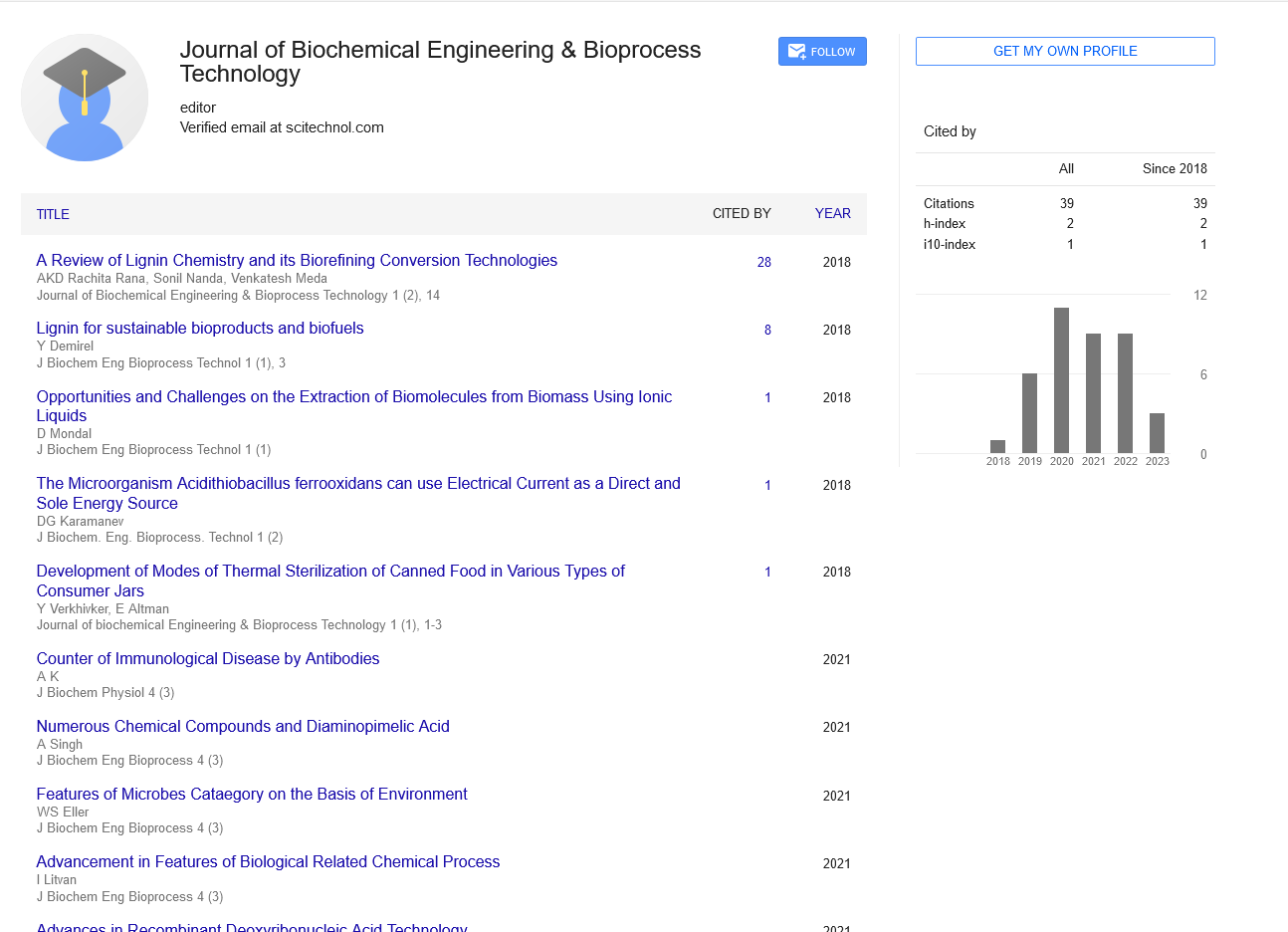Perspective, J Biochem Eng Bioprocess Vol: 6 Issue: 3
The Significance and Science of Synthetic Introns in Biotechnology
Sunghoon Park*
1Department of Biological Engineering, Chalmers University of Technology, Gothenburg, Sweden
*Corresponding Author: Sunghoon Park,
Department of Biological Engineering,
Chalmers University of Technology, Gothenburg, Sweden
E-mail: parks39@gmail.com
Received date: 17 August, 2023, Manuscript No. JBEBT-23-118348;
Editor assigned date: 21 August, 2023, PreQC No. JBEBT-23-118348 (PQ);
Reviewed date: 04 September, 2023, QC No. JBEBT-23-118348;
Revised date: 14 September, 2023, Manuscript No. JBEBT-23-118348 (R);
Published date: 22 September, 2023, DOI: 10.4172/jbebt.1000068
Citation: Park S (2023) The Significance and Science of Synthetic Introns in Biotechnology. J Biochem Eng Bioprocess 6:3.
Description
Genetic engineering has paved the way for remarkable advancements in biotechnology, and one of its most intriguing tools is the synthetic intron. Introns are non-coding segments of DNA found within genes, and they have long been considered DNA. However, recent research has unveiled their potential in revolutionizing genetic engineering, gene therapy, and biotechnological applications. In this article, we will explore the world of synthetic introns and their significance in modern genetics. Genetic engineering has ushered in a new era of innovation in biotechnology, with synthetic introns taking center stage. Introns, previously viewed as non-functional DNA within genes, have evolved from obscurity to significance in recent years. Today, we delve into the world of synthetic introns, focusing on their synthesis and their pivotal role in modern genetics.
Synthetic introns
Synthetic introns are artificially produced or modified versions of natural introns. These customized segments of DNA offer invaluable versatility in genetic manipulation and biotechnological applications. Their synthesis involves a precise understanding of gene structure, gene expression, and the tools to engineer these introns for specific purposes.
They have become essential tools for genetic engineers and biotechnologists. These synthetic introns can be customized to serve specific functions, making them versatile assets in the realm of genetic manipulation. They can be tailored to fine-tune when and how genes are activated, enabling precise control over genetic processes. This is particularly valuable for gene therapy, research, and the development of genetically modified organisms.
Introns rediscovered
Introns, once dismissed as genomic remnants, are non-coding segments found within genes. Over time, they have revealed their integral role in gene regulation, alternative splicing, and gene evolution, challenging the notion of their genetic insignificance.
The art of synthesizing synthetic introns
The making of synthetic introns is a meticulous process that relies on several key techniques:
Sequence design: Genetic engineers design synthetic intron sequences to fit specific applications. These sequences are optimized to regulate gene expression or manipulate alternative splicing.
Customization: The sequences are carefully customized to interact with target genes, enhancing or silencing their activity as required.
Incorporation: Synthetic introns are introduced into target genes through genetic modification techniques. Their placement within the gene is a precarious step, impacting the precise control of gene expression.
Validation: Once synthesized and incorporated, synthetic introns undergo rigorous testing to ensure their effectiveness in regulating gene expression or alternative splicing.
Synthetic introns and biotechnology
Biotechnology companies are increasingly utilizing synthetic introns to develop innovative products. For example, in agriculture, these introns can be employed to engineer crops that are more resistant to pests, diseases, or environmental stress. This not only enhances crop yields but also reduces the need for harmful pesticides and promotes sustainable farming practices. In the pharmaceutical industry, synthetic introns are a game-changer. They are used to optimize the production of therapeutic proteins, such as insulin for diabetics or antibodies for treating various medical conditions. This ensures a more reliable and cost-effective source of these precarious medicines.
Conclusion
Synthetic introns have emerged as a powerful tool in the toolkit of genetic engineers and biotechnologists. They offer precise control over gene expression, enhancing our ability to regulate genetic processes and produce new therapeutic products. With their potential to revolutionize agriculture, medicine, and biotechnology, synthetic introns represent a significant leap forward in our understanding of genetic engineering and the manipulation of the genetic code. As we continue to explore the intricacies of genetic regulation and gene editing, synthetic introns are set to play an ever-increasing role in shaping the future of biotechnology. Their applications are farreaching, promising improved crops, more effective treatments, and groundbreaking advancements in genetic science. While the ethical and regulatory aspects of their use remain a topic of debate, there is no doubt that synthetic introns have opened up a world of possibilities for humanity, allowing us to unlock the full potential of the genetic code.
 Spanish
Spanish  Chinese
Chinese  Russian
Russian  German
German  French
French  Japanese
Japanese  Portuguese
Portuguese  Hindi
Hindi 